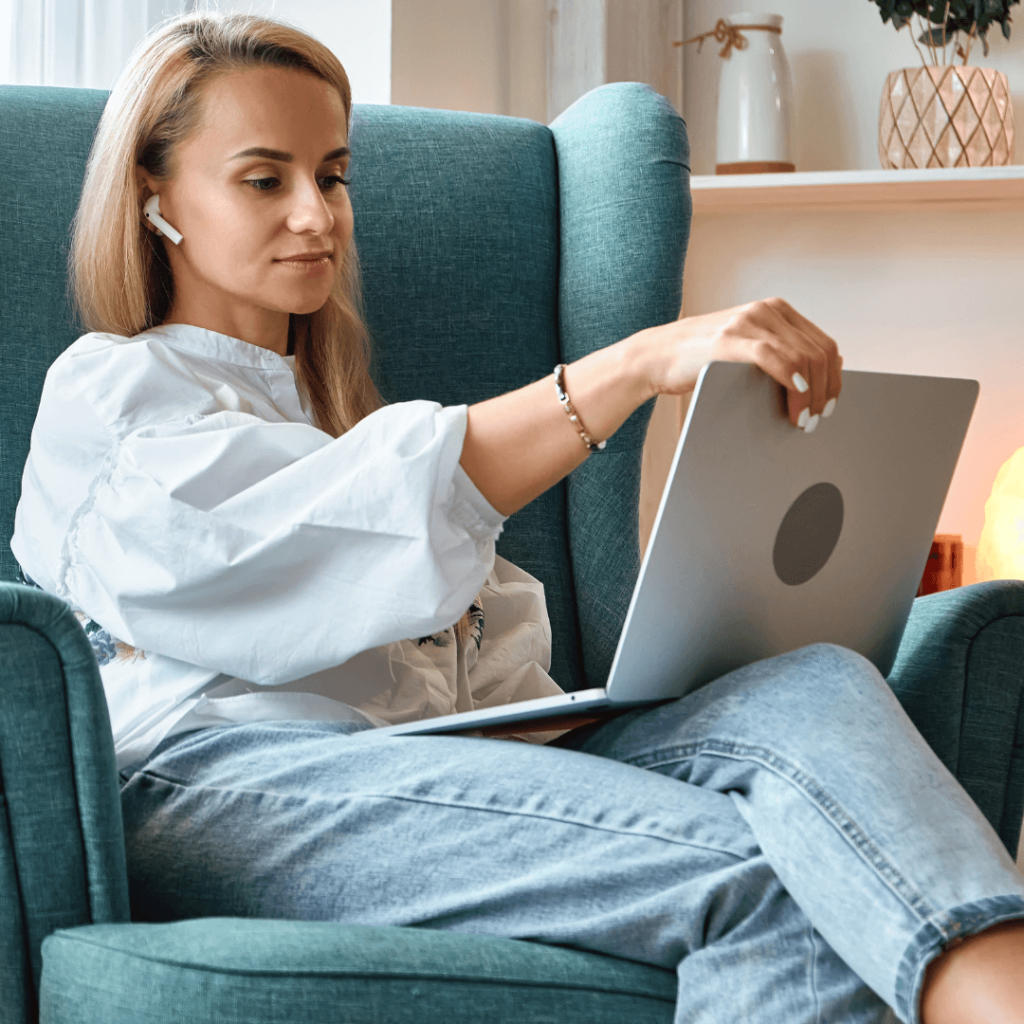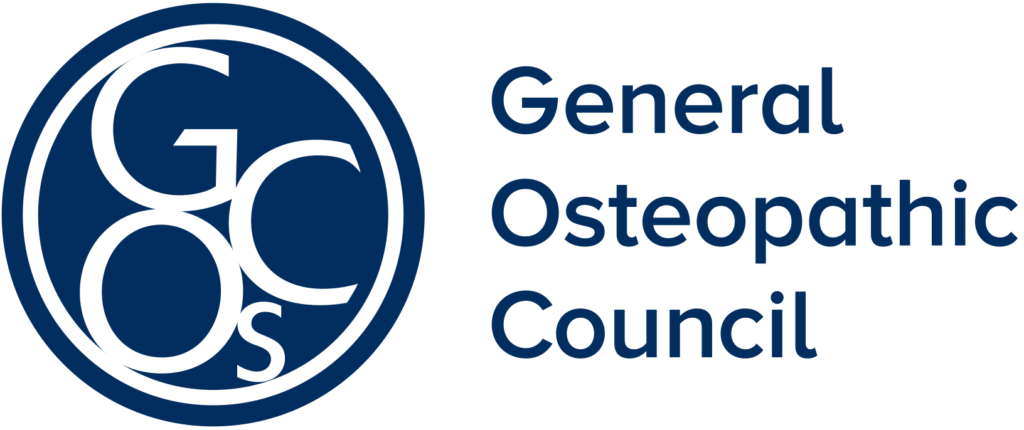Shoulder Pain
Living with constant shoulder pain can be deeply frustrating. You may wake up feeling stiff, struggle to reach overhead cabinets or comb your hair, or wince when carrying shopping bags. It can keep you from sleeping soundly or enjoying your favourite activities. Everyday movements that used to be easy suddenly become agonising, eroding your quality of life.
At Thomas Wynn-Jones Osteopath in Dubai, we understand how debilitating shoulder pain can be. Thomas Wynn-Jones is an experienced UK-trained osteopath who provides compassionate, holistic care to relieve your pain and restore function.
He treats patients from Dubai’s Al Wasl area and surrounding neighbourhoods – including Jumeirah, Downtown Dubai, DIFC, Satwa, Al Wasl, Al Safa, and Business Bay – helping them regain shoulder mobility and get back to what they love.
Book a Consultation
EXCELLENTTrustindex verifies that the original source of the review is Google. Always a good experience with Thomas and the team! 😃Trustindex verifies that the original source of the review is Google. As someone who frequently refers clients for specialised care, I can confidently say that Thomas is an exceptional osteopath, particularly for pre and postnatal women and their babies. I've consistently received positive feedback, highlighting his expertise and gentle approach. Thomas possesses a deep understanding of the unique physiological changes during pregnancy and the challenges new mothers face. He's incredibly adept at addressing common pre and postnatal discomforts, helping alleviate pain, improve mobility, and support overall well-being. He has an ability to calmly assess and gently treat babies for issues ranging from feeding difficulties to colic, providing great support. I wholeheartedly recommend Thomas. He's a true asset to the well-being of families.Trustindex verifies that the original source of the review is Google. Really experienced dedicated Osteopath with a wide range of manual approaches and consistently looking to upgrade his skillset.Trustindex verifies that the original source of the review is Google. Thomas is a highly professional osteopath with a great in depth knowledge and experience. He has treated my entire family of four for several years. Managed to solve quite some old joint issues from intensive wear and tear of sports. Can only recommend his service and his great personality.Trustindex verifies that the original source of the review is Google. Went to Thomas for a lower back pain and he was fantastic in solving my concerns. He is really gentle and I felt comfortable. Will definitely recommend him for anyone looking for an Osteopath!Trustindex verifies that the original source of the review is Google. Thomas took great care of me and my family. Highly recommended.Trustindex verifies that the original source of the review is Google. Thomas is an excellent Osteopath who use an integrative approach to his treatment with excellent technique in a gentle and safe manner. I highly recommend ThomasTrustindex verifies that the original source of the review is Google. Thomas is well regarded and runs a professional clinic. He ensures continuous professional development and learning to keep skills up to date.
Shoulder Anatomy and Mechanics
The shoulder is a ball-and-socket joint (the glenohumeral joint) formed by the upper arm bone (humerus), the shoulder blade (scapula), and the collarbone (clavicle). This unique structure gives the shoulder one of the widest ranges of motion in the body, letting you lift, rotate and extend your arm in almost any direction. However, this great mobility comes at a price: the shoulder is inherently less stable than other joints, relying on muscles and soft tissues to hold it in place.
The rotator cuff is a key group of four muscles (supraspinatus, infraspinatus, teres minor, and subscapularis) whose tendons form a “cuff” around the humeral head. These tendons attach the arm bone to the shoulder blade and help you lift and rotate the arm.
When you raise your arm or push outward, the rotator cuff muscles contract to stabilise the joint and guide its motion. Surrounding these muscles are bursae – small fluid-filled sacs (like the subacromial bursa) that cushion the moving parts of the shoulder. Bursae reduce friction between bone and muscle, allowing the tendons to glide smoothly during movement.
All these structures – bones, joints, muscles, tendons and bursae – work together to give the shoulder remarkable flexibility. But if any part is injured or irritated, the entire shoulder can become painful and stiff. Thomas Wynn-Jones will assess how your shoulder’s anatomy is functioning together, and address all the contributing factors.

Thomas Wynn-Jones
BSc, BOst, Registered Osteopath UK & UAE
About Thomas
Meet Your Expert Osteopath in Dubai
Thomas Wynn-Jones is a seasoned osteopath in his 20th year of practice, he was trained at the British School of Osteopathy (now the University College of Osteopathy) and registered with the General Osteopathic Council in the UK plus the DHA in Dubai. He specializes in providing holistic healthcare solutions for patients of all ages, including sports injury management. His diverse expertise covers various osteopathic approaches, such as cranial, structural, and visceral osteopathy. Thomas’s dedication extends to treating a range of conditions, from low back and neck pain to pregnancy-related discomfort, babies, animals and headaches.
Common Causes of Shoulder Pain
Shoulder pain can arise from many problems. Common causes include:
Rotator cuff injuries or tendonitis
Tears or strains in the rotator cuff tendons are a very common source of shoulder pain. Overuse (from sports like tennis or swimming, or repetitive lifting) can inflame the tendons (tendonitis), while sudden injury can cause tears. Patients often feel pain when lifting the arm, weakness in the shoulder, or pain when sleeping on that side. Since the rotator cuff stabilises the joint, even a small tear or tendon irritation can make everyday arm movements painful.
Frozen shoulder (Adhesive Capsulitis)
In this condition, the shoulder joint capsule becomes thickened, tight and inflamed. The name “frozen shoulder” comes from the characteristic stiffness, patients notice their shoulder “freezes” in place and both active and passive motion are severely limited. Frozen shoulder often starts with dull, chronic pain and gradually progresses to stiffness.
It can happen after an injury or period of immobility (for example in a sling), and it can be very disabling until it slowly resolves over months. Thomas explains that this usually happens when the connective tissue around the shoulder joint becomes inflamed and scarred, tightening the joint capsule.
Shoulder impingement syndrome
Impingement occurs when the rotator cuff tendons are pinched as they pass under the shoulder blade (acromion). Essentially, the top of the shoulder blade “bumps” against the tendons or the subacromial bursa, causing pain with movement. It is common in people who do frequent overhead activities – like swimmers, carpenters or office workers reaching upward.
Patients with impingement often have pain lifting or rotating the arm (especially overhead). Over time, repetitive pinching leads to inflammation (tendonitis) and can even cause rotator cuff tears. Experts estimate that impingement accounts for roughly half of all shoulder pain cases.
Bursitis
The shoulder’s bursae (especially the subacromial bursa under the acromion) can become inflamed when irritated. Shoulder bursitis causes sharp or achy pain, especially when lying on that side or reaching overhead. This inflammation often results from injury or overuse.
For example, repetitive motions (like painting walls or throwing a ball) can inflame the bursa, causing painful swelling between the tendons and bone. Thomas notes that any irritation to the shoulder bursae – for instance through sports injuries or repetitive strain, triggers an inflammatory response that leads to pain and stiffness.
Repetitive strain and postural imbalance
Poor posture (such as slouching at a desk or holding the head forward) and repetitive tasks can overload the shoulder. For instance, consistently holding the shoulder blade in an unhealthy position can “shorten” the space for the rotator cuff, mimicking impingement. Over time, this constant strain on muscles and tendons leads to pain.
Mayo Clinic experts point out that poor posture and muscle imbalance are common contributors to shoulder impingement (and thus pain). They stress that improving posture and shoulder muscle balance is key to relieving pain. Thomas often finds that correcting desk-posture and strengthening weak back and shoulder blade muscles makes a big difference in recovery.
Shoulder instability (hypermobility)
Some people naturally have very flexible or “loose” shoulder joints. While flexibility sounds good, excessive laxity can lead to instability – the humerus can slide too far in the socket, even partially dislocating (subluxation) during activity. Medically, double-jointed or hypermobile shoulders put the joint at higher risk for strains, sprains and repetitive injuries. Patients with instability may report shoulder “slipping out” or frequent feelings that the shoulder isn’t secure. Thomas explains that in these cases the joint’s ligaments and muscles are not providing enough support, leading to chronic ache or recurrent injurie. Addressing instability often requires focusing on strengthening and coordination, which is an important part of his treatment plan.
Osteopathic Treatment for Shoulder Pain
Thomas Wynn-Jones takes a holistic, hands-on approach to shoulder problems. In your first consultation, he’ll perform a thorough assessment – discussing your history, evaluating posture, and testing shoulder movement and strength.
Because osteopathy views the body as an interconnected whole, he often examines not only the shoulder but also the neck, spine and pelvis. Sometimes neck or upper back issues can contribute to shoulder pain, so these areas are checked and treated as needed.
Treatment Methods
Mobilisation and manipulation
Thomas gently moves the shoulder joint through its full range (mobilisation) to ease stiffness and restore normal motion. If appropriate, he may use gentle high-velocity, low-amplitude thrusts (HVLAT/HVLA) on the shoulder or spine to break through tissue restrictions. These quick “shoulder manipulations” (often accompanied by a harmless crack) can realign the joint and reset neuromuscular function. Importantly, all techniques are applied carefully to suit your comfort and condition.
Soft-tissue therapy
He also works on the muscles and fascia around the shoulder – for example, releasing tight knots and trigger points in the rotator cuff, deltoid or upper back muscles. Soft tissue work (like myofascial release or massage) helps to relieve muscle tension, improve blood flow and reduce pain around the joint.
Postural correction and exercises
Since posture and muscle balance heavily influence shoulder health, Thomas will provide targeted rehabilitation exercises. These strengthen the rotator cuff and shoulder-stabilising muscles, improve scapular control, and retrain posture. Even small posture tweaks, such as rolling shoulders back or tucking the chin in, can make a big difference. Research highlights that improving shoulder strength and correcting posture are essential for long-term relief. Thomas will guide you through safe exercises to improve shoulder mobility and stability, and advise on ergonomic changes (for example, desk setup or sleeping position).
Holistic care
Throughout treatment, Thomas emphasises patient education: he explains why the shoulder is painful (for instance, a rotator cuff tear or impingement) and what you can do daily to help. Osteopathy is not just about hands-on work – it’s also about empowering you with self-care strategies.
Every treatment is individually tailored, because two shoulders are never the same. As one study notes, osteopathic care often includes a whole-body approach combined with hands-on joint and soft tissue treatment and rehabilitation exercises.
Why Choose Thomas Wynn-Jones in Dubai
Thomas brings nearly 20 years of experience to your care. He trained in the UK (at the British School of Osteopathy, now University College of Osteopathy) and is registered with the UK General Osteopathic Council as well as Dubai’s DHA. He has practiced internationally (including in London and Singapore) and now serves patients in Dubai with the same patient-focused, evidence-based osteopathy.
Thomas’s approach is holistic and thorough: rather than just masking symptoms, he gets to the root of your shoulder problem. He is also skilled in related osteopathic fields (cranial, visceral, paediatric), which means he can assess even subtle whole-body contributors to your pain. In his own words: “We examine the entire body, because dysfunction in the spine or pelvis can influence shoulder pain”.
He treats each patient as an individual. Whether you have rotator cuff pain or a frozen shoulder, Thomas will draw on his structural osteopathy training to mobilise joints, and use gentle manipulation where needed. He has a reputation for being professional yet empathetic – listening to your story and adjusting treatment to your needs. Patients in Dubai trust Thomas because of his UK qualifications and his gentle, evidence-informed style. When you see him, you know you’re getting specialist shoulder pain care from a highly credentialed osteopath.
Location & Appointments
Thomas sees patients at Browns & Co Clinic, 343 Al Wasl Rd (Al Bada’a), Dubai, a short drive from Jumeirah, Satwa, and close to Downtown and DIFC. Appointments are available on weekdays and Saturdays. To start improving your shoulder mobility and easing pain, call or WhatsApp +971 50 533 3669 (or use the contact form on our site). Our practice location is convenient for residents of Al Wasl, Al Safa, Business Bay and Business Bay, making it easy to get expert osteopathy near you. Take the first step towards pain-free shoulders today by booking a consultation with our osteopath in Dubai.
Practicing At
Browns & Co
343 Al Wasl Rd – Al Bada’a – Dubai – United Arab Emirates
Tel: +971 4 273 1555
Call or Contact
Tel/WhatsApp: +971 50 533 3669
Frequently Asked Questions (FAQ)
What is frozen shoulder (adhesive capsulitis)?
Frozen shoulder is a condition where the shoulder capsule tightens and becomes inflamed. It causes gradually increasing pain and severely limited motion (“freezing” the joint). Patients often first experience a dull ache that intensifies, followed by stiffness that makes everyday tasks (like reaching into a cupboard or dressing) very difficult. We address it with gentle mobilisation and stretching techniques to ease the tight capsule and restore mobility.
Is osteopathy effective for relieving rotator cuff pain and shoulder stiffness?
(Yes/No)
Yes. Osteopathy can greatly help rotator cuff issues by improving shoulder mechanics and reducing inflammation. Thomas uses joint mobilisations, gentle soft tissue work, and therapeutic exercises to relieve shoulder joint stiffness and pain. By restoring proper movement and strength, osteopathy often relieves rotator cuff tendonitis and associated pain. In many cases, patients find significant improvement in their shoulder mobility after a course of treatment.
Osteopathy vs Physiotherapy for shoulder pain: which is better?
Both osteopathy and physiotherapy can improve shoulder pain, but they differ in approach. Osteopaths (like Thomas) focus on a holistic, hands-on correction of joint and spine alignment as well as soft tissue, often identifying and treating postural or whole-body factors. Physiotherapists may emphasize guided exercise programs and modalities (like ultrasound or electrotherapy). In practice, osteopathy often includes similar rehab exercises, but with extra emphasis on manual manipulation. For example, to improve shoulder mobility, osteopaths might apply precise joint thrusts or stretches that a physiotherapist might not. Many patients benefit from a combination: an osteopath can reset and mobilise the joint, while physiotherapy provides long-term strengthening. Thomas’s clinic in Dubai can tailor a plan that may include both targeted manual treatment and home exercises for optimal recovery.
How does posture correction help shoulder pain?
Poor posture (like rounded shoulders or forward head carriage) changes the shoulder blade’s position and narrows the space for the rotator cuff. This can pinch nerves or tendons and lead to impingement and muscle strain. Correcting posture (by rolling shoulders back, lifting the chest, and engaging core muscles) helps realign the spine and shoulder blade, giving the rotator cuff more room to move. Thomas may teach you ergonomic adjustments and specific posture exercises because improving your shoulder position is a key part of managing pain. In short, better posture reduces strain on the shoulder joint and can significantly ease shoulder pain over time.
Do I need an x-ray or MRI before seeing an osteopath for shoulder pain?
Not always. Osteopaths like Thomas can evaluate most common shoulder issues (tendonitis, minor tears, impingement, etc.) through physical examination. If we suspect a serious injury (such as a fracture or large rotator cuff tear) or other pathology, we can refer you for imaging. However, many shoulder problems respond well to osteopathic care without prior scans. We will always coordinate with medical services if surgery or specialist intervention becomes necessary.
What is shoulder impingement syndrome?
Shoulder impingement happens when the shoulder blade (acromion) pinches the rotator cuff tendons as the arm moves. Think of the tendons as sliding under a tight space; when that space narrows (due to anatomy, posture or inflammation), the tendons get pinched. Symptoms include pain when lifting the arm, especially overhead, and weakness. It often starts as rotator cuff tendonitis and can eventually cause tearing if untreated. We manage impingement by improving posture, strengthening the cuff muscles, and performing gentle stretches and mobilisations to widen that subacromial space.
If you have more questions or need expert care for shoulder joint stiffness, mobility issues or any shoulder pain, contact Thomas Wynn-Jones Osteopath in Dubai today. We’re here to help you move freely again.
Request an Online Consultation
A solution to request a specialist consultation, directly from your home, with your smartphone or PC .

REGISTERED WITH

